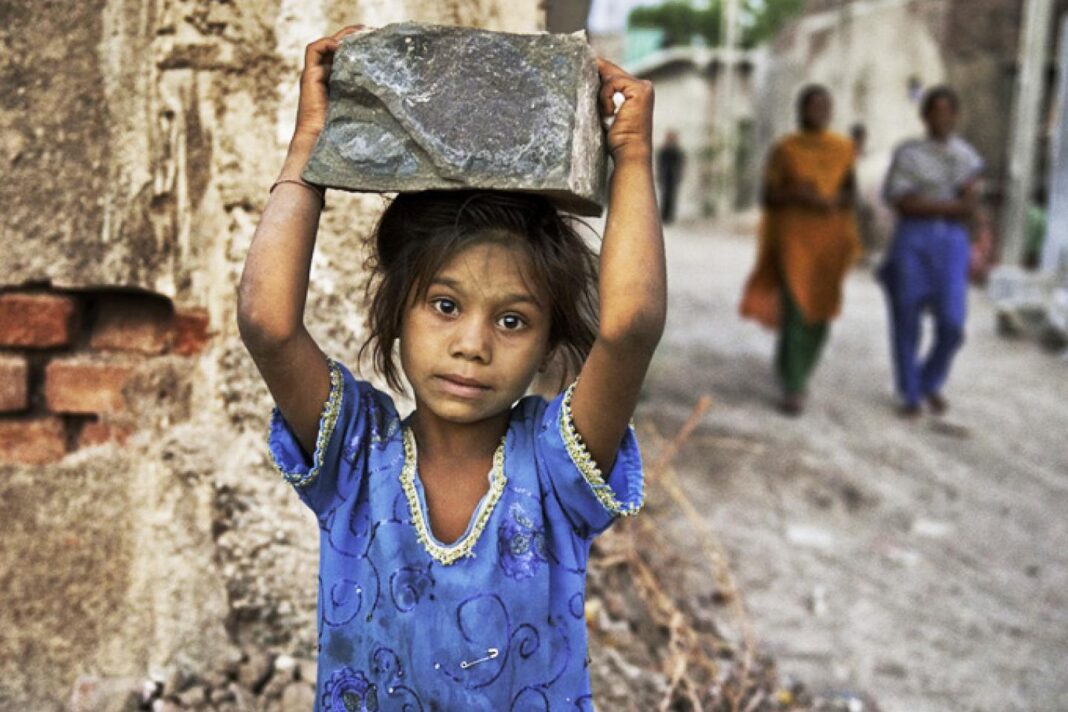By: M. Ilyas Kalhoro

Adeel, a sixth-standard student, was one day sitting dejected in his classroom. As he saw his teacher entering the classroom, he came before him. Overwhelmingly dithery, he could not utter anything. Buoyed up by the teacher, he said “Sir mere Abu kehte ke school shoro aur kiryane ke Dukan par kaam Karo”( Sir my father says leave the school and start working on a grocery store). This is not an idiosyncratic story, related just to Adeel. There are thousands of such children, scattered throughout the country, sharing the same type of story. Driven by poverty, their parents do not want them study, but rather make them do some kind of labour.
Child labour refers to any labour that exploits children negatively influences their education and divests them of childhood. It leads to physical harm and mental suffering. Starting as a social evil, child labour has now turned into a national issue. It is estimated that about 12.5 million children are subjected to child labour in Pakistan, a country having the second largest number of out-of-school children in the world (about 22.8 million children aged 5-16 not attending school here). Infliction of mental harm, deprivation of education and loss of child-life aside, the minors are prone to physical torture and even murder- Zohra Shah, Uzma Bibi, Tayyaba and Jameel are some cases in point . Limited access to free and compulsory education, poverty, unemployment, lack of awareness in parents for the importance of education, and non- implementation of anti-child-labour laws are some important causes of the growing menace.
United Nations declared 2021 as the “International Year for the Elimination of Child Labour”. Under the slogan “Take action to end child labour” the UN member states and partners are determined to end the menace. Unfortunately, in Pakistan, the issue has not been attached to that importance.
Pakistan is under international and national obligations and commitments for the eradication of child labour. Article 32 of the United Nations Convention on the Rights of the Child (1989) mentions “States Parties recognize the right of the child to be protected from economic exploitation and from performing any work that is likely to be hazardous or to interfere with the child’s education, or to be harmful to the child’s health or physical, mental, spiritual, moral or social development”. Similarly, Sustainable Development Goal 8.7 requires the elimination of the scourge in all its forms till 2025. According to Article 11(3) of the Constitution of Pakistan: “No child below the age of 14 years shall be engaged in any factory or mine or any other hazardous employment”.The Khyber Pakhtunkhwa Prohibition of Employment of Children Act, 2015, the Punjab Restriction on Employment of Children Act 2016, and the Sindh Prohibition of Employment of Children Act 2017, all these laws make the employment of children illegal but are not complied with.
Just formulating laws, without properly implementing them and taking certain other measures, can not help in ending the bane. There is a need of devising and implementing a long-term plan at the federal and provincial levels. First of all, the federal and provincial governments must ensure the implementation of Article 25-A of the Constitution of Pakistan, which advances to the children of the age group of 5-16 years the right of free and compulsory education. The minimum age for employment should be 16 years. The regulation of working conditions of adult workers and ensuring that they get acceptable wage will reduce to some extent the need of employment of children for supporting family income. Rehabilitation of child workers through education and initiation of social protection programs for their families are also contextually necessary measures to be taken . Establishment of helplines for reporting working of any minor will also be productive . To reduce violence against such children the federal government should schedule Section 328-A of Pakistan Penal Code 1860 (Cruelty to Children) as non-bailable and non-compoundable. Running campaign in print and electronic media, and conducting seminars for creating awareness in public as to child labour laws are also good options. Civil society organisations can also play an important role in educating the masses for not employing children in any kind of labour. The government of Pakistan had to grasp the opportunity of the international year against child labour, which it didn’t. Time is not over, the government can initiate a lasting plan on its own against the menace.
The writer is an educator and educational researcher, working under the Education and Literacy Department, Government of Sindh.



